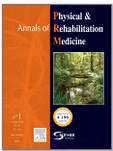 Charcot-Marie-Tooth disease (CMT) is one of the most common hereditary neuropathies. It causes a sensory-motor deficit of variable gravity, generally evolving very slowly over time. Very heterogeneous from a clinical and electrophysiological point of view, but also genetic (nearly 90 CMT genes, all forms combined, have been identified so far), CMT causes distal motor deficit predominant in the muscles of the feet and hands. The appreciation of functional discomfort in the hands is not always easy especially in the context of a disease almost stable.
Charcot-Marie-Tooth disease (CMT) is one of the most common hereditary neuropathies. It causes a sensory-motor deficit of variable gravity, generally evolving very slowly over time. Very heterogeneous from a clinical and electrophysiological point of view, but also genetic (nearly 90 CMT genes, all forms combined, have been identified so far), CMT causes distal motor deficit predominant in the muscles of the feet and hands. The appreciation of functional discomfort in the hands is not always easy especially in the context of a disease almost stable.
In an article published in February 2020, clinicians from Clermont-Ferrand were interested in defining objective criteria to measure this impairment. They screened several scores / functional tests and quality of life scales against the clinical and electrophysiological parameters of 33 adult patients with CMT1A, the most common demyelinating form of CMT. The severity of the nerve damage measured by the EMG is not necessarily a relevant criterion from the clinical point of view, especially in terms of quality of life. Correlations remain generally difficult to establish and the authors recommend the comparative, multidimensional and holistic use of several tests (Pinch Gauge, Jamar, Sollerman, Jebsen, Nine-hole Peg) to appreciate more particularly the motor loss of the hands and its impact.
